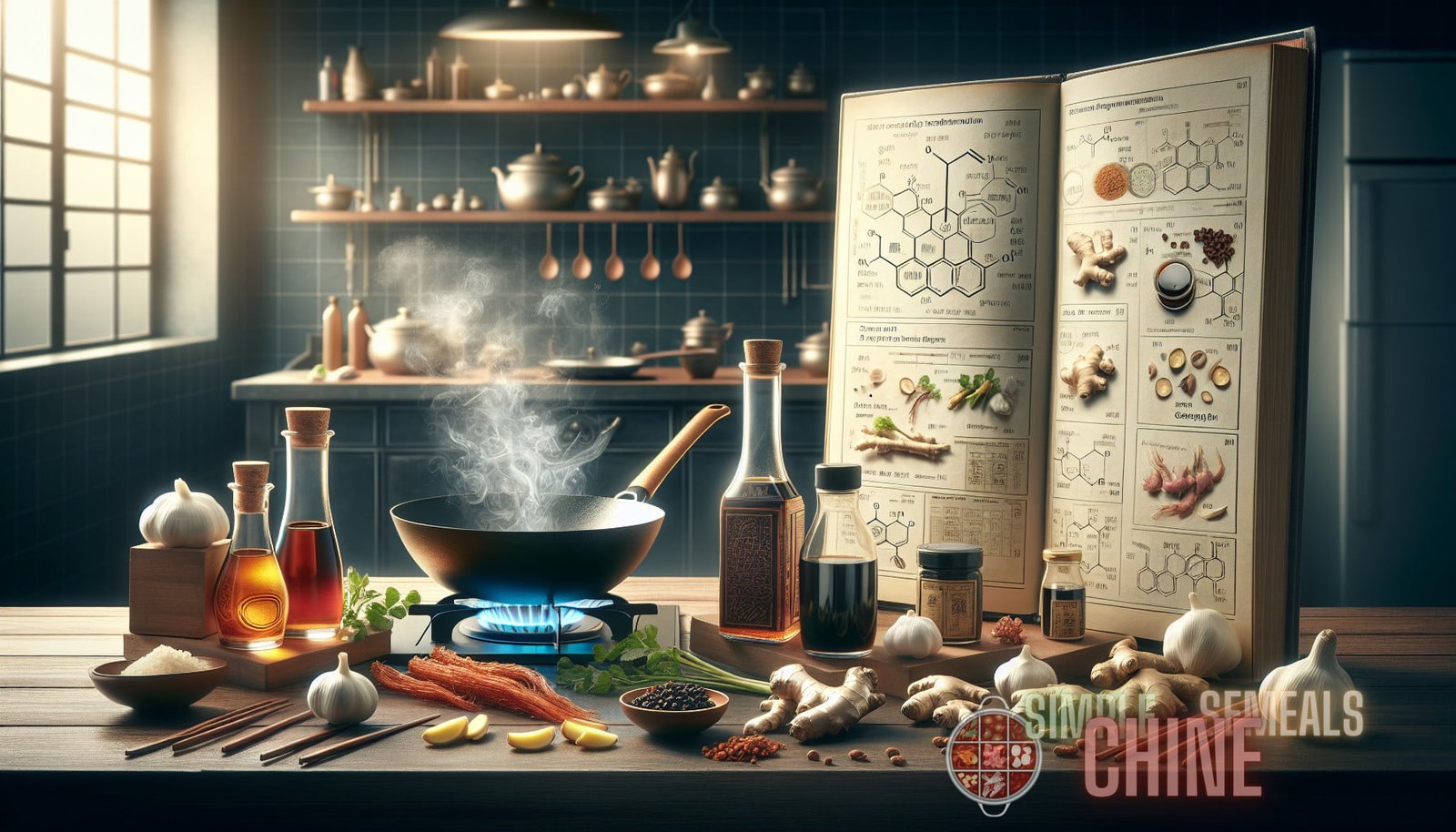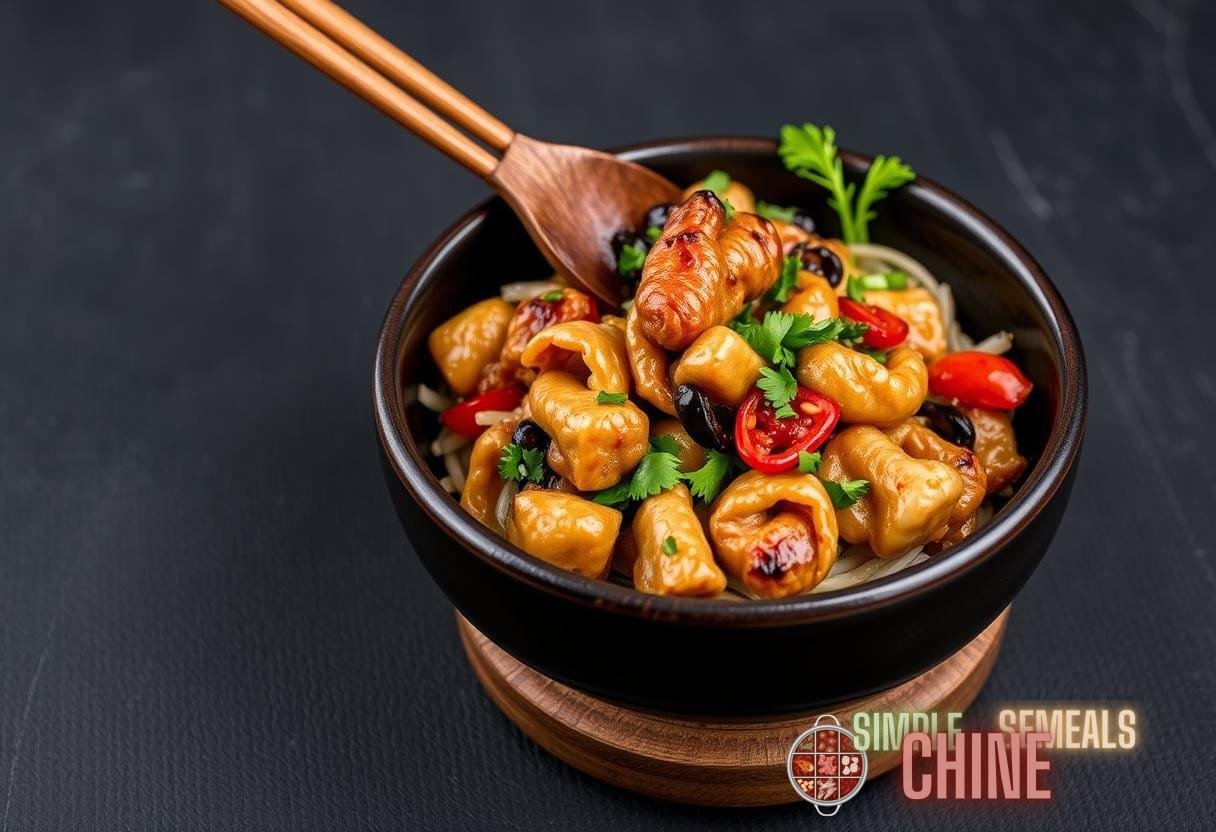The Art of Chinese Culinary Alchemy: Unveiling the Science Behind Irresistible Flavor Transformations
In the realm of culinary arts, Chinese cuisine reigns supreme with its diverse flavors, aromatic spices, and unique cooking techniques. One aspect that sets Chinese cuisine apart is its mastery of flavor transformations, where basic ingredients undergo extraordinary changes that result in irresistible dishes. This culinary alchemy is deeply rooted in ancient Chinese traditions and is a testament to the country’s rich food culture. In this article, we will delve into the science behind these flavor transformations, exploring the techniques and ingredients that make Chinese cuisine so tantalizing.
The Five Fundamental Tastes in Chinese Cuisine
Before we can truly understand the art of Chinese culinary alchemy, we must first become acquainted with the five fundamental tastes that form the building blocks of Chinese cuisine. These tastes are:
- Sweet: The sweet taste is typically associated with sugar and desserts. In Chinese cuisine, it often comes from ingredients such as rock sugar, honey, or various fruits.
- Sour: The sour taste adds a refreshing tang to dishes. Common sources of sourness in Chinese cuisine include vinegar, lemon, and pickled vegetables.
- Bitter: Bitterness is often associated with medicinal herbs and is believed to have health benefits. Bitter flavors can be derived from ingredients such as bitter gourd, bitter melon, and bitter herbs.
- Salty: Saltiness is a familiar taste in Chinese cuisine, imparting depth and enhancing other flavors. Salt, soy sauce, and fermented soybean paste are commonly used to provide this taste.
- Umami: Umami is the savory taste that adds richness and complexity to dishes. Ingredients such as soy sauce, fermented soybean paste, and mushrooms contribute to the umami flavor.
The interplay between these five tastes is what gives Chinese cuisine its distinct flavor profile. Each taste has its role to play, and skilled Chinese chefs know how to balance and harmonize them to create unforgettable dishes.
The Role of Ingredients in Chinese Culinary Alchemy
In Chinese cuisine, the selection of ingredients plays a pivotal role in the alchemical transformation of flavors. Chinese chefs have a vast array of ingredients at their disposal, each with its unique taste and texture. These ingredients are carefully chosen and combined to bring out the best in each other and create a harmonious symphony of flavors.
One key ingredient that forms the backbone of Chinese cuisine is the soybean. From soy sauce to tofu, soybeans are a versatile ingredient that contributes to the umami taste. Fermented soybean products, such as fermented soybean paste or doujiang, are particularly prized for their ability to add depth and complexity to dishes.
Another essential ingredient in Chinese culinary alchemy is the Chinese mushroom. Varieties such as shiitake, black fungus, and wood ear mushrooms are rich in umami flavor and are widely used in stir-fries, soups, and braised dishes. These mushrooms have a unique ability to enhance the flavors of other ingredients and create a more robust and satisfying taste.
Chinese cuisine also heavily relies on various aromatic spices and herbs, which add fragrance and depth to dishes. Common spices include ginger, garlic, star anise, Sichuan peppercorns, and cinnamon. These spices not only provide a delightful aroma but also have medicinal properties that are highly valued in traditional Chinese medicine.
The Art of Flavor Transformations in Chinese Cooking Techniques
Chinese cuisine boasts a wide range of cooking techniques, each carefully designed to extract maximum flavor from the ingredients. These techniques play a crucial role in the art of flavor transformations and are meticulously executed by skilled Chinese chefs.
Stir-Frying:
Stir-frying is perhaps one of the most well-known Chinese cooking techniques. This high-heat cooking method involves quickly frying thinly sliced ingredients in a wok. The intense heat seals in the flavors, while the constant tossing ensures even distribution of heat and flavor.
This technique allows the ingredients to retain their natural flavors and textures while infusing them with the essence of the wok. As a result, stir-fried dishes have a unique smoky flavor that is difficult to replicate with other cooking methods.
For more in-depth tips and techniques on Chinese stir-frying, check out this article on Chinese wok tips.
Braising:

Braising is another essential cooking technique in Chinese cuisine that involves simmering ingredients in a flavorful liquid over low heat. This gentle cooking method allows the ingredients to absorb the flavors of the braising liquid, resulting in tender and moist dishes.
The art of braising lies in the careful selection of ingredients and the balance of flavors in the braising liquid. Chinese chefs often use a combination of soy sauce, spices, and other aromatics to create a rich and savory braising liquid that infuses the ingredients with irresistible flavors.
Steaming:
Steaming is a popular cooking technique in Chinese cuisine, especially for delicate ingredients such as fish and dumplings. This gentle and moist cooking method preserves the natural flavors and textures of the ingredients while infusing them with the aromas of the surrounding ingredients.
Chinese chefs often use tiered steamers, where different ingredients can be steamed simultaneously, allowing for a variety of flavors to combine harmoniously. Steamed dishes are known for their clean and pure flavors, making them a favorite choice for health-conscious diners.
Unlocking the Secrets of Chinese Culinary Alchemy: Chinese Umami
While the concept of umami has gained global recognition in recent years, the Chinese have long appreciated its importance in their cuisine. Umami is often referred to as the fifth taste, and it plays a significant role in Chinese culinary alchemy.
In Chinese cuisine, umami is attributed to the presence of glutamate, an amino acid that enhances the savory taste of foods. Glutamate-rich ingredients such as soy sauce, fermented soybean paste, and mushrooms are revered for their ability to elevate the flavors of other ingredients.
To learn more about how to master the art of umami in Chinese cooking, read our article on Chinese umami.
The Importance of Yin and Yang in Chinese Cooking
Chinese cuisine is deeply rooted in the concept of Yin and Yang, the two opposing yet complementary forces in the universe. This philosophy extends to the realm of food, where balancing Yin and Yang is considered crucial to maintaining good health and harmony.
In Chinese cooking, Yin is represented by cooling ingredients such as vegetables and fruits, while Yang is represented by warming ingredients such as meats and spices. The art of Chinese culinary alchemy lies in the harmonious balance of Yin and Yang, creating a dish that not only tantalizes the taste buds but also nourishes the body.
The Ever-Evolving Art of Chinese Culinary Alchemy
Chinese culinary alchemy is a dynamic and ever-evolving art. It is deeply rooted in tradition and ancient wisdom but also embraces innovation and creativity. Chinese chefs are constantly pushing the boundaries of flavor transformations, experimenting with new ingredients, techniques, and combinations.
To truly appreciate the art of Chinese culinary alchemy, one must experience the diverse flavors and textures that Chinese cuisine has to offer. From the fiery spices of Sichuan cuisine to the delicate flavors of Cantonese cuisine, each regional cuisine in China offers a unique and unforgettable gastronomic experience.
Conclusion
The art of Chinese culinary alchemy is a testament to the rich food culture and traditions of China. Through the careful selection of ingredients, mastery of cooking techniques, and the understanding of Yin and Yang, Chinese chefs are able to create dishes that are not only delicious but also deeply satisfying to the senses.
Whether it is the delicate flavors of a steamed fish or the bold and spicy flavors of a stir-fried dish, Chinese cuisine offers a diverse and tantalizing array of flavors that have captivated the world. By unraveling the science behind these flavor transformations, we gain a deeper appreciation for the artistry and skill that goes into creating these culinary masterpieces.
So, the next time you indulge in a plate of mouthwatering Chinese cuisine, take a moment to savor the flavors and appreciate the science behind its irresistible taste.


